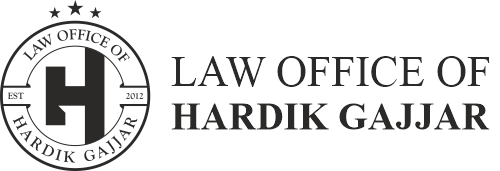- Call Us: +91-99789 02762
- Email Us: info@gajjarhardik.com
- Office: Motera,Ahmedabad,Gujarat-380005,India
Design Transfer and Assignment
Frequently Asked Questions
‘Design’ means only the features of shape, configuration, pattern or ornament or composition of lines or colour or combination thereof applied to any article whether two dimensional or three dimensional or in both forms, by any industrial process or means, whether manual, mechanical or chemical, separate or combined, which in the finished article appeal to and are judged solely by the eye, but does not include any mode or principle or construction or anything which is in substance a mere mechanical device, and does not include any trade mark, as define in clause (v) of sub-section of Section 2 of the Trade and Merchandise Marks Act, 1958, property mark or artistic works as defined under Section 2(c) of the Copyright Act, 1957.
Object of the Designs Act is to protect new or original designs so created to be applied or applicable to particular article to be manufactured by Industrial Process or means. Sometimes purchase of articles for use is influenced not only by their practical efficiency but also by their appearance. The important purpose of design Registration is to see that the artisan, creator, originator of a design having aesthetic look is not deprived of his bonafide reward by others applying it to their goods.
No. Because once the alleged Design i.e., ornamentation is removed only a piece of paper, metal or like material remains and the article referred ceases to exist. Article must have its existence independent of the Designs applied to it. [Design with respect to label was held not registrar, by an Order on civil original case No. 9-D of 1963, Punjab, High Court]. So, the Design as applied to an article should be integral with the article itself.
When an application for registration of a Design is in order, it is accepted and registered and then a certificate of registration is issued to the applicant. However, a separate request should be made to the Controller for obtaining a certified copy of the certificate for legal proceeding with requisite fee.
The registration of a design confers upon the registered proprietor ‘Copyright’ in the design for the period of registration. ‘Copyright’ means the exclusive right to apply a design to the article belonging to the class in which it is registered.
The duration of the registration of a design is initially ten years from the date of registration, but in cases where claim to priority has been allowed the duration is ten years from the priority date. This initial period of registration may be extended by further period of 5 years on an application made in Form-3 accompanied by prescribed fees to the Controller before the expiry of the said initial period of ten years. The proprietor of a design may make application for such extension even as soon as the design is registered.
The date of registration except in case of priority is the actual date of filing of the application. In case of registration of design with priority, the date of registration is the date of making an application in the reciprocal country.
No. A registered design, the copyright of which has expired cannot be re-registered.
Piracy of a design means the application of a design or its imitation to any article belonging to class of articles in which the design has been registered for the purpose of sale or importation of such articles without the written consent of the registered proprietor. Publishing such articles or exposing terms for sale with knowledge of the unauthorized application of the design to them also involves piracy of the design.
If anyone contravenes the copyright in a design he is liable for every offence to pay a sum not exceeding Rs. 25,000/- to the registered proprietor subject to a maximum of Rs. 50,000/- recoverable as contract debt in respect of any one design. The registered proprietor may bring a suit for the recovery of the damages for any such contravention and for injunction against repetition of the same. Total sum recoverable shall not exceed Rs. 50,000/-as contract debt as stated in Section 22(2)(a). The suit for infringement, recovery of damage etc should not be filed in any court below the court of District Judge.
Yes, it would be always advantageous to the registered proprietors to mark the article so as to indicate the number of the registered design except in the case of Textile designs. Otherwise, the registered proprietor would not be entitled to claim damages from any infringe unless the registered proprietor establishes that the registered proprietor took all proper steps to ensure the marking of the article, or unless the registered proprietor show that the infringement took place after the person guilty thereof knew or had received notice of the existence of the copyright in the design.
First-to-file rule is applicable for registrability of design. If two or more applications relating to an identical or a similar design are filed on different dates only first application will be considered for registration of design.
Yes, the same applicant can apply again since no publication of the abandoned application is made by the Patent Office, provided the applicant does not publish the said design in the meanwhile.
Yes, it is possible to transfer the right through assignment, agreement, transmission with terms and condition in writing or by operation of law. However, certain restrictive conditions not being the subject matter of protection relating to registration of design should not be included in the terms and condition of the contract/agreement etc. An application in form-10, with prescribed fees in respect of one design and appropriate fees for each additional design, for registration of the transfer documents is required to be made by the beneficiary to the Controller within six months from the date of execution of the instruments or within further period not exceeding six months in aggregate. An original/notarized copy of the instrument to be registered is required to be enclosed with the application.
India is one of the countries party to the Paris Convention so the provisions for the right of priority are applicable. On the basis of a regular first application filed in one of the contracting state, the applicant may within the six months apply for protection in other contracting states, latter application will be regarded as if it had been filed on the same day as the first application.
An artistic work as defined under Section 2(c) of the Copyright Act, 1957 is not a subject matter for registration which reads as follows:
“Artistic works” means: –
- A painting, a sculpture, a drawing (including a diagram, map, chart or plan) on engraving or a photograph, whether or not such work possesses artistic quality.
- An work of architecture and
- Any other work of artistic craftsmanship.
A registration of design will cease to be effective on non-payment of extension fee for further term of five years if the same is not paid before the expiry of original period of 10 years. However, lapsed designs may be restored provided the following conditions are satisfied:
- Application for restoration in Form-4 with prescribed fees is filed within one year from the date of lapse stating the ground for such non-payment of extension fee with sufficient reasons.
- If the application for restoration is allowed the proprietor is required to pay the prescribed extension fee and requisite additional fee and finally the lapsed registration is restored.
An artistic work as defined under Section 2(c) of the Copyright Act, 1957 is not a subject matter for registration which reads as follows:
“Artistic works” means: –
- A painting, a sculpture, a drawing (including a diagram, map, chart or plan) on engraving or a photograph, whether or not such work possesses artistic quality.
- An work of architecture and
- Any other work of artistic craftsmanship.
- The design should be new or original, not previously published or used in any country before the date of application for registration. The novelty may reside in the application of a known shape or pattern to new subject matter.
- The design should relate to features of shape, configuration, pattern or ornamentation applied or applicable to an article.
- The design should be applied or applicable to any article by any industrial process.
- The features of the design in the finished article should appeal to and are judged solely by the eye. This implies that the design must appear and should be visible on the finished article, for which it is meant.
- Any mode or principle of construction or operation or any thing which is in substance a mere mechanical device, would not be a registrable design. For instance a key having its novelty only in the shape of its corrugation or bent at the portion intended to engage with levers inside the lock associated with, cannot be registered as a design under the Act.
- The design should not include any Trade Mark or property mark or artistic works as defined under the Copyright Act, 1957.
Once a design is registered, it gives the legal right to bring an action against those persons (natural/legal entity) who infringe the design right, in the Court not lower than District Court in order to stop such exploitation and to claim any damage to which the registered proprietor is legally entitled. However, it may please be noted that if the design is not registered under the Designs Act, 2000 there will be no legal right to take any action against the infringe under the provisions of the Designs Act, 2000.
Stay Connected with Us !
We will notify new updates directly to your mail box..

